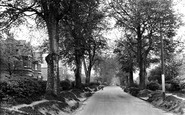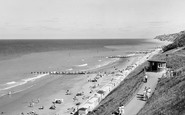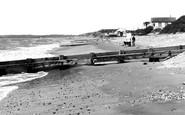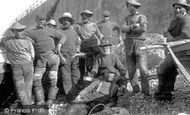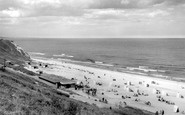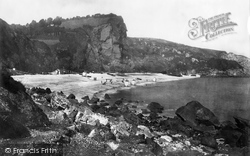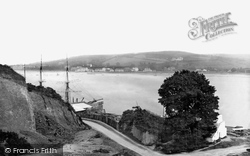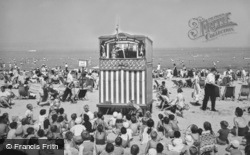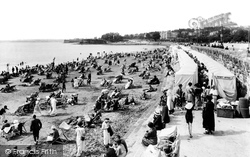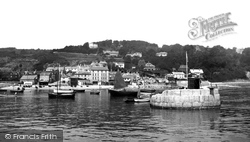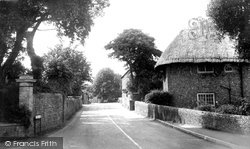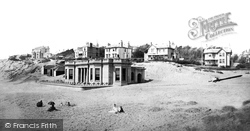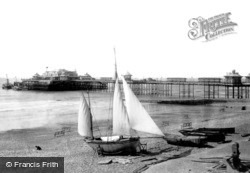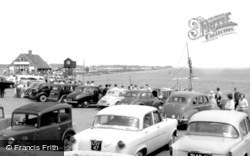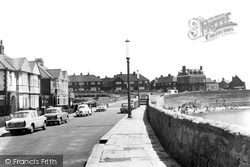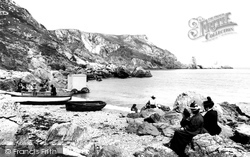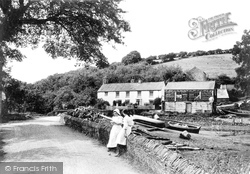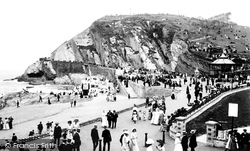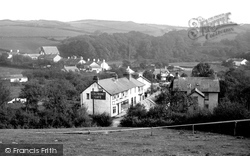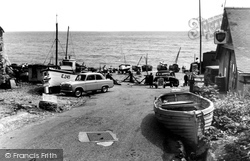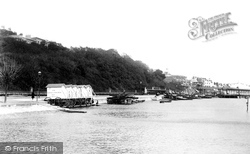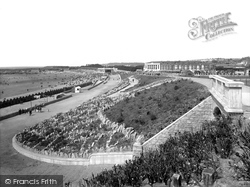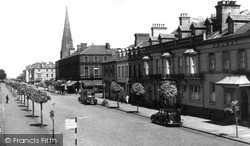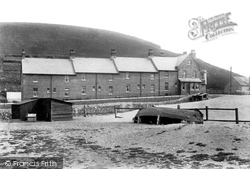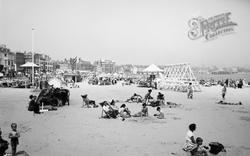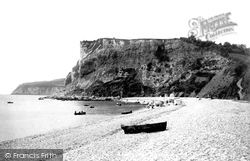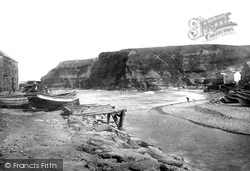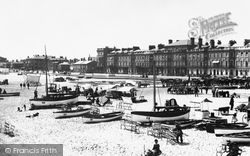Places
12 places found.
Those places high-lighted have photos. All locations may have maps, books and memories.
Photos
191 photos found. Showing results 561 to 191.
Maps
115 maps found.
Books
1 books found. Showing results 673 to 1.
Memories
1,374 memories found. Showing results 281 to 290.
The Chocolate Box Sweet Shop
My dad knows of the chocolate box, in fact it is believed his mother May Ellis owned or managed it at this time - she had three children, two boys and one girl - does anyone remember May Ellis or her sons Harry Ellis or ...Read more
A memory of Farncombe in 1920 by
The Best Of Times
My Mum and Dad first brought me to Fairbourne when I was born in 1966. My father and his father before him had been coming to the same bungalow (Min-y-Don on the Coast Road - Penrhyn Drive South) all their lives. Mum Dad and my ...Read more
A memory of Fairbourne in 1975 by
The Beeches Avenue
We lived at number 20 from the early 50's to 1969 when we moved down to Devon. It was a lovely street to live in with the magnificent beeches all along. Nice neighbours- the Radfords at number 16 and the Huttons at 22. We had a plot ...Read more
A memory of Carshalton by
The Beeches
Isn't it funny how some things stick in your mind forever. Washford 391 was the phone number. The Beeches Camping and Caravan Site was the place and the time was the early 1950s. Bob Bosley was the owner and his brother Geoff ran the ...Read more
A memory of Blue Anchor in 1952 by
The Beach We Were First
My uncle John Cooke owned the gravel pit mentioned along with the brush factory. We lived in Staplehall Road and used to go across Farmer Howard's field to the pits and go on the very same beach. In the winter my brother ...Read more
A memory of Bletchley in 1950 by
The Beach Huts
We spent many lovely holidays here and my lasting memory is of our first job was to race down to the beach and see 'Dick' Davies and sort a beach hut for our 2 weeks stay, they were a little piece of calm when the weather was rough, ...Read more
A memory of Overstrand in 1972 by
The Beach
I lived with my sister, I was 9 when I first stayed with her. I spent many hours on the beach at Jury's Gap loving the feel of the sand and sun, it was safe in those days. Our dog, Whiskey was with me a lot of the time, although he used to ...Read more
A memory of Camber in 1959 by
The Beach
When I look at these old photos, Sheringham has not changed that much, it's very strange though seeing the old Grand Hotel. I used to take the ponies round the roundabout as a young child to earn money during the summer. The water trough is still there but full of flowers instead of horses' noses.
A memory of Sheringham by
The Beach
This photo shows Crimdon Dene beach. Blackhall beach at that time was covered in coal dust and slurry caused by the tipping of the Colliery waste into the sea.
A memory of Blackhall Colliery in 1965 by
Captions
1,131 captions found. Showing results 673 to 696.
The beach may have been home to bathing machines by day, but at night there were other things going on - in 1853 a raid by customs men revealed 153 casks of smuggled rum and brandy.
In an effort to keep out the riff-raff, local children were banned from the beach, although they have presumably been allowed back since.
From early Victorian times, Punch and Judy shows moved away from the fairgrounds and streets and on to the beach in pursuit of lucrative new audiences.
Styled as the English Riviera, its beaches are in fact somewhat smaller than might be imagined. This crowded scene looks south along Torbay towards Paignton.
Buildings facing seawards from above the beach include the Victorian Custom House, the Coastguard Watch House, the Old Bonded Store - built as a boarding house in 1832 - and clapper-boarded Wings.
The pebble and sandy beach provides views along the coast to Worthing pier; just a short distance inland are the grassy slopes of Highdown Hill, which has long been a popular recreational
Cliff lifts became a popular solution to the problems of beach access in the later years of the Victorian period, and were used at a number of seaside resorts.
Pleasure boats were still available from the beach; these competed for trade with the paddle steamers that had been introduced in the 1880s, after their initial function had been superseded by the railways
Beyond the trees are sandy but dangerous beaches, where the tide comes in faster than a man can run.
Children play on the beach below the sea wall.
There is no beach here, but the Victorians were determined to make the most of the warm waters. The bathing machine, sunk to its axles in the shallows, allowed decorum to be preserved.
Behind is a typical ramshackle scene: a heap of firewood, a tumbling-down boarded building advertising 'good stabling' to visiting riders, and a trio of beached row-boats for hire.
There is no beach here, but the Victorians were determined to make the most of the warm waters. The bathing machine, sunk to its axles in the shallows, allowed decorum to be preserved.
The small beach to the left is at Prechers Rock.
small village had a café, the Dolybont Café (centre), whose sign was visible from the road between Talybont and Borth – the proprietors hoped that holidaymakers would stop on their way to or from the beach
There is no harbour at Beer, so the boats are drawn up on the beach at the end of each fishing trip. The BP garage (right) no longer exists.
In fact changing on the beach was officially forbidden until 1948, although, by that time, the regulation had long been ignored.
Rows of bathing huts line the beach, with bathing costumes (which could be hired) drying in the wind on lines behind them beside the newly-built promenade.
The peak of Criffel in Dumfries can easily be seen across the Solway Firth from the stony beach-front. The spire of the parish church of Christ Church punctuates this photograph.
Further south, on the beach, there was an older thatched Watch House which became Old Watchouse Cafe.
Weymouth's beach has gently sloping sands and is mostly sheltered from the storms and swells of the English Channel, making it suitable for the youngest and most inexperienced of bathers.
The shingle beach here is showing the beginnings of a tourist industry, but in the late 19th century fishing was still important.
Disturbed water at the cliff base indicates the power and force of the seas as they surge into the bay and crash against the beach.
In this early view of the beach, there are already signs of local businesses capitalising on the new influx of visitors, with terraces of newly-built lodging houses and cheap hotels.
Places (12)
Photos (191)
Memories (1374)
Books (1)
Maps (115)



